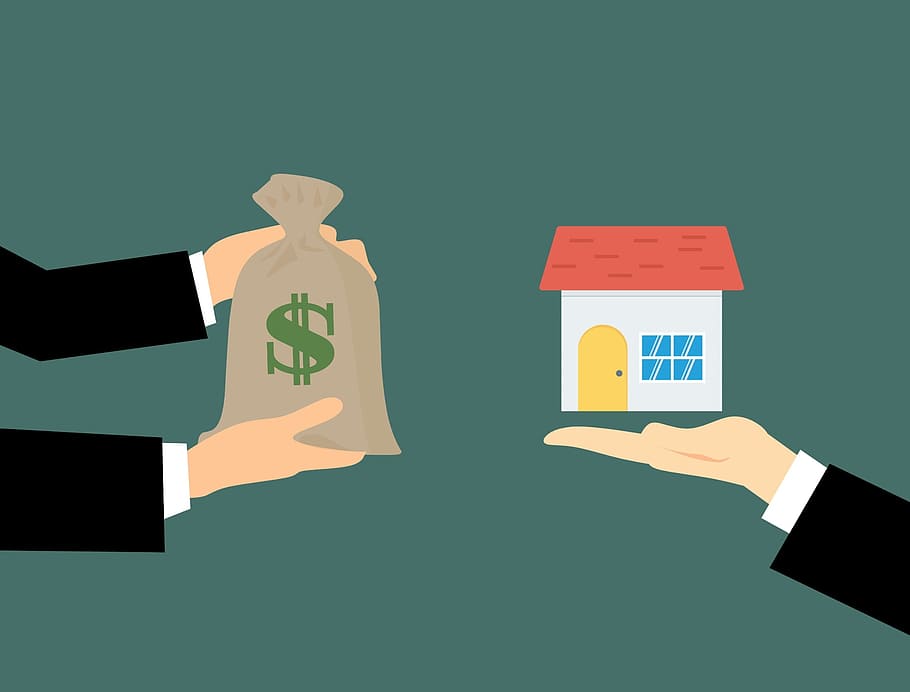Depending on the type of property and people involved, the specific steps within each real estate transaction might fluctuate a bit. But for the most part, the majority of transactions look the same.
For the sake of continuity and simplicity, we’re going to use a residential transaction to outline the real estate process. Commercial and industrial transactions follow a comparable process, but the residential process is likely the most relatable among consumers.
We’ll cover both the seller’s and buyer’s perspectives below.
1. Hiring an Agent
When someone decides to sell their home, the first thing he or she might do is hire a listing agent (unless they decide to sell it themselves as a For Sale By Owner — which we'll explain later).
Historically, clients have found their listing agents through personal recommendations or an area advertisement during a newspaper or flyer. Nowadays, some sellers find their agents through online means, like social media, online advertisements, or sites like Zillow or Trulia.
Listing agents typically give a listing presentation. This pitch also will highlight how they’d price and market your home, what their commission structure is, and other competitive advantages. This helps clients decide which agent is the best fit. When someone decides to buy a home, he or she might do one of two things: secure a buyer’s agent who can help them discover and shop for property, or start shopping for property themselves, choosing to hire an agent after they’ve found a property they like.
There’s no right or wrong way to go about hiring a buyer’s agent, although an agent might introduce you to potential properties you might’ve not otherwise found on your own. Interviewing and securing a buyer's agent at the beginning of the real estate process can be much more rewarding than simply letting the listing agent take care of both sides. Buyers can benefit from representation, too.
2. Listing or Viewing Property
As a seller, the subsequent step would be listing your property so potential buyers can find it. The steps in this process include.
- Determining the price of your home, which your agent can assist with. This is calculated using your home’s location, condition, amenities and upgrades, and the price of similar properties. Agents will compile a comparative market analysis (CMA) to help you understand how and why your home is priced.
- Entering your home into the Internet Data Exchange (IDX), which your agent has access to. The IDX brings together real estate listings from all over the country. It enables members of the multiple listing service (MLS) to share and market their properties to other agents and potential buyers.
- Marketing your home. Whether they invest in traditional methods or list your home on other real estate websites, these marketing tactics will increase the exposure of your property to other agents and buyers. (We'll cover some popular ones below.)
- Hosting open houses and showings with buyers. Open houses and showings give potential buyers a first-hand look at your home. These in-person experiences also allow buyers to ask questions and express concerns — saving both parties time and energy in the long-run. Some agents may opt to create real estate videos and virtual staging opportunities for your home, too.
- Some sellers opt to sell their home themselves, which is referred to as For Sale By Owner (FSBO). FSBOs theoretically save sellers commission money (since seller clients pay both the listing and buyer’s agents), but in turn, they don’t get access to CMAs, the IDX, or any agent knowledge or marketing. In some cases, FSBO sellers may pay a cooperating commission to the buyer’s agent working with whomever buys their home.
Some people use sites like Zillow or Trulia to find potential homes within their price range while others rely on their agents to discover property and schedule showings.
Typically, buyers will attend open houses to urge a pity a property and its location, condition, and amenities. Then, they’ll schedule dedicated showings with their agent (or the listing agent) at which they’ll walk through the property and ask more specific questions.
Recall how we mentioned that buyers should be pre-approved for a loan before searching for homes. Why? Because if a buyer views a home they need to shop for, they ought to be prepared to put a suggestion on the spot … especially during a highly-competitive housing market.
If someone were to view a property they liked then seek out loan pre-approval, the process could take weeks. No seller would wait that long if they need other offers.
3. Buying/Selling and Closing on Property
Let’s say you’re selling your home, and someone wants to buy it. What happens then?
Well, firstly, the potential buyer would place an offer on your home. This offer might be exactly at selling price, below or above, counting on how competitive the market is and the way desperate you and/or the vendor is. Then, you’d consider the offer, consult with your agent (if you have one), and accept or deny. There could be a little back-and-forth, or both parties could immediately agree and immediately sign a sales contract.
(If you, the seller, had entered into an agreement with a right-of-first-refusal clause, you’d have to let that potentially interested party view and make an offer on your property before any other parties. Right-of-first-refusal clauses are typically written into contracts between family members, tenants, and landlords, and in the case of a homeowner association (HOA).




No comments:
Post a Comment